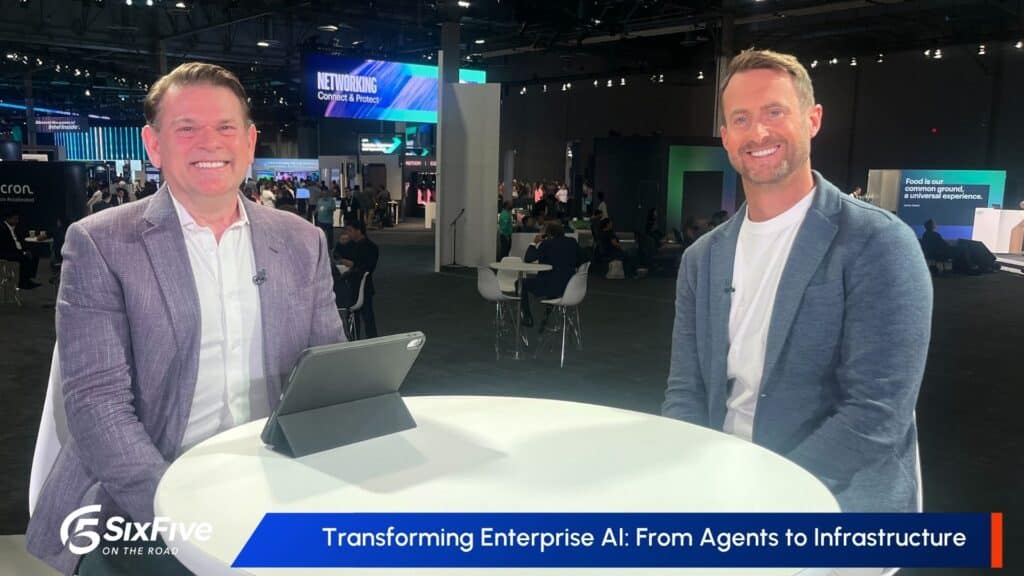The News: Oracle announced the general availability of Oracle Globally Distributed Autonomous Database. Built on Oracle’s sharding technology, Globally Distributed Autonomous Database is designed to deliver the benefits of Oracle Autonomous Database while giving customers control over data distribution and data placement policies. Read the full blog post on the Oracle website.
Oracle Autonomous Database Goes Global Distribution
Analyst Take: Oracle unveils the general availability of Oracle Globally Distributed Autonomous Database aimed at enabling organizations to automatically distribute and store data across the planet in many physical locations transparently to applications. With this approach, customers can attain breakthrough scalability and availability, fulfill data sovereignty edicts, and benefit from autonomous operations, substantially decreasing costs.
Juan Loaiza, EVP, Mission Critical Database Technologies, provided the analyst briefing that sharpened the Oracle message as to why the new launch is directly addressing the vast demand for transparent distribution of data throughout the globe for scale, survivability, and sovereignty.
Why Distributed Databases Are Mission Critical: A Succinct Primer
In terms of foreground, a distributed database stores data across multiple physical locations instead of a single location. Each location stores a subset of the data with the physical distribution of data hidden from applications. Today, it administers many critical distributed applications around the world, including mobile messaging, credit card fraud detection, payment processing, personalized marketing, internet infrastructure, and IoT-based smart power meters.
Data is physically distributed across multiple databases, which are called shards. Data in each shard is replicated for survivability and all shards can process application requests underpinned by an active-active architecture. Data can be distributed across shards, data centers, and regions while the database is running.
Application requests that only need data from a single shard are transparently sent directly to that shard while requests that need data from multiple shards are automatically split into multiple requests that are sent to the appropriate shards and committed atomically. As such, queries can be parallelized both within and across shards to implement massively parallel analytics.
Distributed databases can be difficult to deploy and manage due to the large number of servers deployed across multiple locations. Globally Distributed Autonomous Database can eliminate such complexity by using and extending Autonomous Database’s AI and ML-driven automation with automatic data distribution and shard management.
Administrators can manage the distributed database as a single logical database and use automated provisioning, tuning, scaling, patching, and security capabilities to avoid time-consuming manual tasks and potential errors. In addition, automatic database scaling per individual shard enables customers to ramp up and draw down resources to meet demand and minimize consumption and cost.
Also, I find that distributed databases enable organizations to avoid single database scalability and survivability limitations because databases are independent of each other. This includes a scale-out clustered database that runs on a single database implementation. The tradeoff for running on multiple databases is that it works optimally when most data access is local to a shard. Requests that access data across shards will have higher latency and lower throughput than in a cluster. Adding more shards can increase cross-shard SQL, which increases coordination overhead and latency.
Oracle Globally Distributed Autonomous Database Slam Dunks the Competition
To meet the full array of customer demands, Oracle implements both distributed and clustered database architectures. Customers can select the architecture that is predicated on their requirements and that includes combining both architectures to gain the best of both worlds. From my view, Oracle’s portfolio offers stark competitive advantages over competitive offerings such as CockroachDB, Google Spanner, and YugabyteDB. Such competitive offerings generally have many functional limitations and scale inadequately when data access is not localized. Plus, they have high latency due to distributed data access and distributed commits alongside lacking the ability to failover applications without aborting active connections and transactions.
Notably, other distributed databases run on top of NoSQL engines, which allow them to get to market swiftly. However, they now suffer from poor performance because NoSQL engines are not designed for SQL workloads further diminished by being especially ill-suited for reporting and ghastly for analytics.
I discern that Oracle provides more data distribution methods than other distributed database offerings. These methods encompass value-based data distribution, system managed data distribution, composite data distribution, user-defined data distribution, duplicated data distribution, and partitioned data distribution with each shard. For example, with partitioned data distribution, the data in any shard can be further partitioned by a data value such as a date range and then further partitioned by another data value or hash, thereby enabling faster queries and joins.
Oracle’s support of replication methods is unparalleled. Fundamentally, matching the replication method to the needs of the application is critical for a distributed database. Oracle Distributed Database replication can be configured to satisfy the needs of each application including synchronous replication, asynchronous replication, adaptive synchronous replication, as well as the combination of local synchronous and remote asynchronous replication.
Specifically, in my assessment, Oracle replication can fulfill any scaling or survivability need through redo level replication using Active Data Guard. Built-in benefits include breakthrough performance, thoroughly complete SQL functionality, readable replicas, and streamlined operation. This is integral to ensuring the fulfillment of the strictest high availability (HA)/disaster recovery (DR) service level agreements (SLAs).
Moreover, I see that Oracle’s support for shard deployment architectures is unmatched. Oracle can deploy shards on independent servers, fault-tolerant scalable clusters, shards across on-premises, cloud, and multiple clouds, as well as within a fault-tolerant cluster. For instance, a fault-tolerant cluster is useful for customers who want the highest transparency and simplicity and do not need to distribute data for sovereignty or ultimate scale-out. As a result, sharding is used to route SQL to specific nodes of a cluster for increased access locality and hot-spot avoidance.
Also, Oracle Globally Distributed Autonomous Database adds autonomous management to eliminate the operational complexity of distributed databases and tangibly decrease costs. This directly aligns with providing a peerless mission-critical cloud native distributed database services underpinned by serverless, elastic, and auto-scaling principles.
The Surging Data Sovereignty and Regulation Factor
I see that data sovereignty is becoming increasingly mandatory on a global basis including major markets such as India. In key cases, this requires financial institutions with multi-national presence to store payment data inside the country if both the payer and payee are in-country. As a result, global financial service companies that store data for all countries in a single database are swiftly rendered at a competitive disadvantage.
This requires the Oracle Globally Distributed Autonomous Database solution to ensure data storage is protected in-country according to its mandates while also assuring access from anywhere. Oracle’s solution becomes essential as I anticipate that data regulations will surge worldwide as more countries roll out their own edicts and more industries become regulated.
Sustains Market Momentum of Autonomous Database Select AI Debut
The move follows the debut of Autonomous Database Select AI, designed to simplify and streamline how organizations can get answers about their business with a particular focus on the data layer. Select AI translates the language of the organization and its workforce into Oracle SQL queries by processing questions through an AI large language model (LLM). Select AI is built directly into Autonomous Database, making it easy for any organization to immediately take advantage of these new capabilities. No new downloads, coding, proprietary interfaces, cutting and pasting from one form to another, or installations are required. Now SQL queries are automatically routed to the appropriate country or shard by the Globally Distributed Database.
Of key importance, Select AI is only the inaugural step of AI integration as Oracle Database 23c provides vector database functionality that augments Generative AI with the organization’s business data, including support for retrieval augmented generation (RAG). Specifically, Oracle AI vector search in 23c is designed for ease-of-use and understanding. New features, such as a new VECTOR data type for storing vector embeddings and SQL syntax and functions, express similarity search with ease. Similar capabilities will be available in Oracle MySQL HeatWave with Vector Store. In addition, Oracle Database 23c with Raft quorum-based consensus replication will provide automatic sub-3-second application failover with zero data loss. This capability alongside AI Vector Search with RAG integration will be available later in 2024.
Key Takeaway: Delivering More Data Distribution, Replication, and Deployment Methods Than Any Other Database
Overall, I believe Oracle is bringing its truly serverless and pay-per-use Autonomous Database innovations to the world of distributed databases and changing the dynamics of the competitive landscape. For example, from fault-tolerant Exadata to Active Data Guard in-country replication, Oracle meets the strictest HA/DR SLAs – and other distributed database providers cannot match it. And for data distribution methods, Oracle supports six sharding methods, while Google Spanner and CockroachDB support only one. Clearly Oracle has surpassed the competition and their rather limited distributed database capabilities.
Disclosure: The Futurum Group is a research and advisory firm that engages or has engaged in research, analysis, and advisory services with many technology companies, including those mentioned in this article. The author does not hold any equity positions with any company mentioned in this article.
Analysis and opinions expressed herein are specific to the analyst individually and data and other information that might have been provided for validation, not those of The Futurum Group as a whole.
Other Insights from The Futurum Group:
Oracle Autonomous Database Select AI Fuels AI-Infused Innovation
Oracle Database@Azure Streamlines Cloud Operations and Boosts AI
Oracle Generative AI: Advancing the Frontier of Enterprise Innovation
Author Information
Ron is an experienced, customer-focused research expert and analyst, with over 20 years of experience in the digital and IT transformation markets, working with businesses to drive consistent revenue and sales growth.
He is a recognized authority at tracking the evolution of and identifying the key disruptive trends within the service enablement ecosystem, including a wide range of topics across software and services, infrastructure, 5G communications, Internet of Things (IoT), Artificial Intelligence (AI), analytics, security, cloud computing, revenue management, and regulatory issues.
Prior to his work with The Futurum Group, Ron worked with GlobalData Technology creating syndicated and custom research across a wide variety of technical fields. His work with Current Analysis focused on the broadband and service provider infrastructure markets.
Ron holds a Master of Arts in Public Policy from University of Nevada — Las Vegas and a Bachelor of Arts in political science/government from William and Mary.





